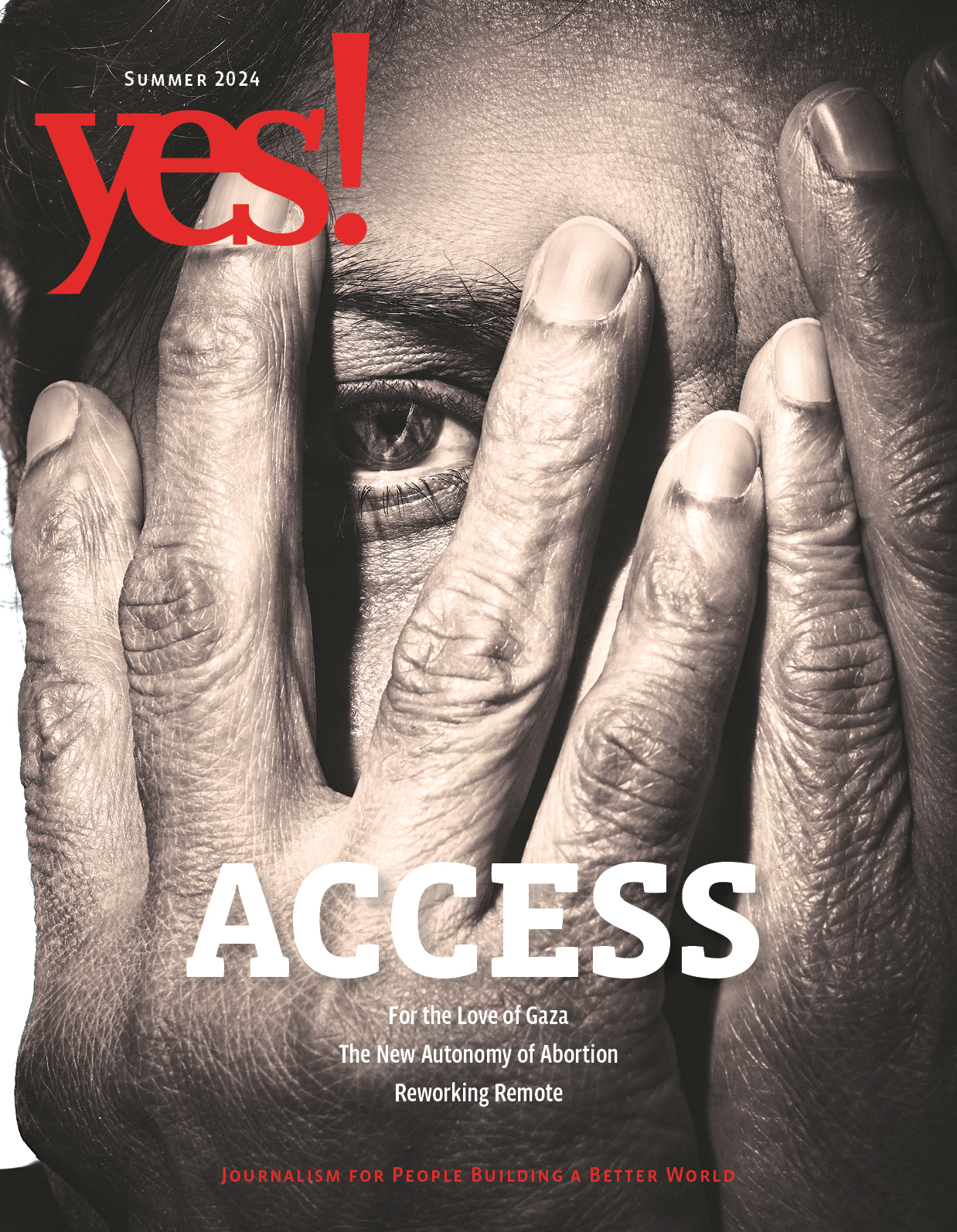Acts of Collective Imagination: Notes From the Chief Policy Wonk at America’s Department of Arts and Culture

Mural by Eduardo Kobra, New York City. Photo by catwalker / Shutterstock.com.
This article is part of New Economy Week, a collaboration between YES! Magazine and the New Economy Coalition that brings you the ideas and people helping build an inclusive economy—in their own words.
Imagine if U.S. policy looked like this: A universal, publicly funded Basic Income Grant (BIG) covered economic needs, benefiting every person equally; and Cultural Impact Studies (CIS), analogous to environmental impact studies, assessed the potential impacts of proposed development on our cultural fabric. This public policy would value the sense of belonging, sites of public memory, gathering places, and expressions of heritage cultures that would be destroyed when a longstanding neighborhood is razed to make way for a new freeway or sports stadium.
These are just two of the cultural policy proposals featured in the U.S. Department of Arts and Culture’s recently published An Act of Collective Imagination: The USDAC’s First Two Years of Action Research. As “Chief Policy Wonk,” I coordinate the National Cabinet and authored the report. We like to say the U.S. Department of Arts and Culture is the nation’s first people-powered department. It’s not a government agency—it’s not even affiliated with government— but a national action network mobilizing artists, cultural workers, and other community members to use creativity for social justice. We’re trying to spark a creative, grassroots movement that engages millions of people in enacting a world rooted in empathy, equity, and social imagination. Using arts-based methods, we invite people to envision the future they want to inhabit, and create projects to realize their visions.
An Act of Collective Imagination puts forward six cultural policy ideas grounded in grassroots visions, including BIG and CIS. Two key considerations shaped the report: linking local and national concerns and organizing; proposing policies that emerge from people’s lived knowledge rather than from distanced expertise; and promoting a broad public interest in culture, too often dismissed as a special-interest frill.
For example, the report shares community members’ stories of jobs and homes lost and of struggling to make ends meet. These challenges are no different for artists. A distressing thread of testimony runs through our research: general economic issues have created displacement, unemployment, and desperation for artists who place their gifts at the service of democracy, renewal, and equity through community-based work such as participatory murals, social-issue theater, hip-hop education, and many other forms.
We work with people across the country to envision how their communities can be transformed by the power of art and culture and to share what they see. We invite them to dream in public of a future in which full cultural citizenship is a reality. “Cultural citizenship” describes circumstances in which everyone feels welcome in their own communities; everyone appreciates that all of us weave the social fabric binding us as a people; and full inclusion is embodied in every aspect of our communities and institutions.
We host art-infused public dialogues on communities’ futures (“Imaginings”) and USDAC National Actions. For example, last January’s People’s State of the Union —it will be repeated again in 2016—invited people everywhere to contribute first-person stories revealing the state or our union. The recent #DareToImagine set up “Imagination Stations” across the U.S., where “Emissaries from the Future invited people to use arts-based exercises to share futures they want to inhabit. With advice from our National Cabinet, these visions become exciting, accessible proposals for new policies and initiatives.
Envisioning a new economy, it’s essential to remember that everything created must first be imagined. The gifts that artists learn and teach—innovation, social imagination, resilience, resourcefulness, connectivity—are just what our society needs to bring about the shift to a people-powered economy.
For more information, visit the U.S. Department of Arts and Culture.






